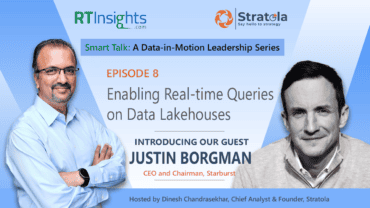
The key to an IoT project’s success is to get business involved early and to have a firm understanding of the specific needs and complexities of any project.
A survey earlier this year from Beecham Research estimates that nearly three-fifths (58%) of businesses said that their IoT projects had been
unsuccessful—just 12% said that they’d been fully successful.
How do enterprises beat these odds to finally see positive results from their IoT projects? Many of the issues stem from lack of involvement from the business side, and “largely come down to a lack of understanding of the specific needs of the project and the complexity of the IoT solutions themselves,” according to an eBook published by SoftwareAG and Beecham.
See also: 5G Integration In IIoT Systems Accelerate Industry 4.0 Adoption
Technical issues also need attending: “Many IoT projects require high-bandwidth, high-performance, low-latency network connectivity to transport the data gathered and enable successful integration — and enterprises often have difficulty in selecting and procuring the right connectivity.
Ways to overcome common IoT issues and see results were explored by the eBook’s authors:
Think big, start small, move fast: “Establish a clear vision for your future use of the IoT,” the researchers advise. “It’s important to focus and prioritize your IoT efforts. This could involve choosing the project that promises the most immediate business benefits. You might also consider which project is likely to get the greatest support across the business and deliver the most visible benefits.”
Build a business case: “Set clear goals and targets to measure against. Think about what secondary benefits your IoT projects might have and how to measure them. Defining the costs, expected benefits, and risks will help you gain buy-in from your organization’s leadership and measure success and ROI.”
Unlock the insight in your data: “Adding analytics makes that project a game-changer. When you analyze your IoT data, you have insights you can act on to realize business goals and targets.”
Create joined-up solutions: “It’s not just a case of getting the data into the systems. You need to be able to orchestrate workflows between systems. IoT data plays an important role in the use of artificial intelligence and machine learning to transform business processes.”
Make IoT for everyone: “Gone are the days of IoT being just for IT experts. Operational technology specialists, including people on the manufacturing floor, can use the IoT to improve processes and efficiencies immediately.
With the advent of self-service IoT, OT specialists can connect devices, start consuming data from those devices, and create integrations and analytics on their own—all without the help of IT.”
Think security from the start: “As a business, it’s not just your own data you need to worry about, but also the data you gather from customers and partners. An IoT platform can make managing the security of IoT devices much easier. It can help you simplify the addition of new devices—critical if you’re going to have thousands of them—and enforce minimum security standards. It can also help you protect data by implementing
segmentation and encryption.”
Don’t limit your range. “No one calls it the Internet of ‘Specific’ Things. To realize the goal of connecting any ‘thing,’ you need to be able to connect things anywhere.”
Don’t reinvent the wheel. “Look to leverage whatever existing knowledge and tools that you can. Some platforms have their own SDKs and developer communities. Ensure that the one you choose enables
you to use the same APIs everywhere—on the edge, in the cloud and on-premises—and can share data and analytics models across computing platforms too.”





























